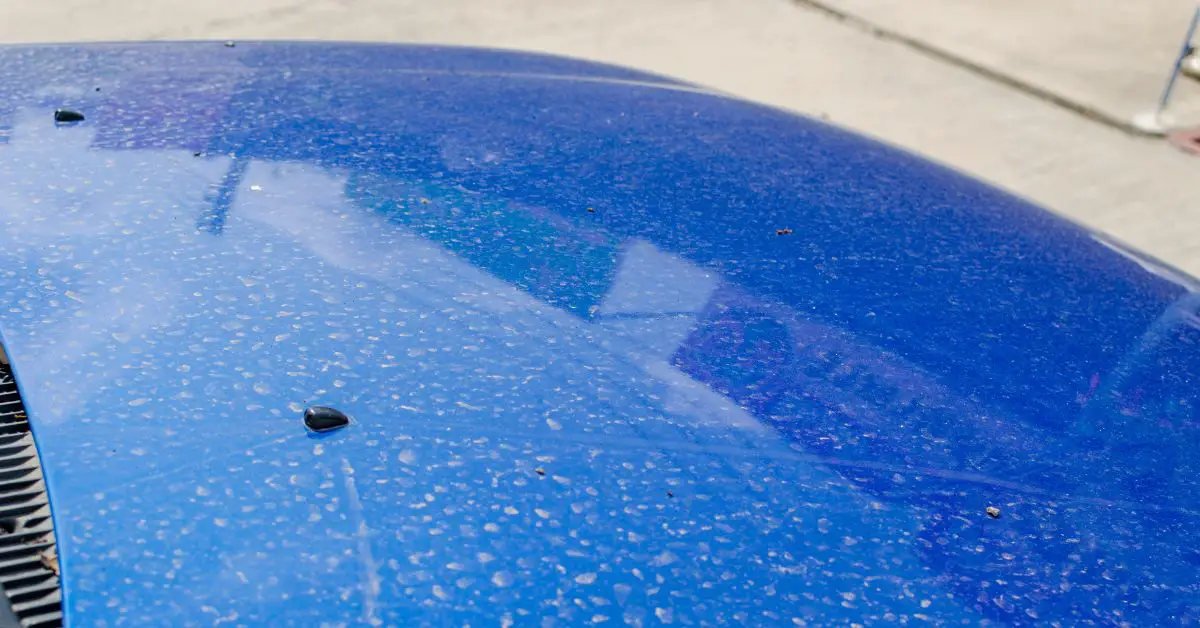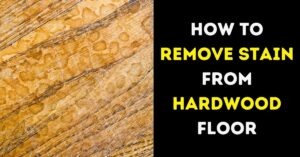
As car owners, we cherish the beauty of our vehicles. Yet, hard water stains can disrupt this appeal, leaving unsightly watermarks due to the high mineral content in the washing water. The good news? You can remove them with ease! In this post, I will guide you on how to banish hard water stains from your car using effective techniques and products. Also, I’ll explore common causes, different removal methods, and essential tools to keep your car looking as good as new. So, how do I remove hard water stains from my car?
Step-by-Step Guide to Remove Hard Water Stains from Car

Identifying Hard Water Stains
As a car owner, it’s essential to identify hard water stains to effectively address the issue. These unsightly blemishes can sometimes be mistaken for other car stains, leading to incorrect cleaning methods and potential damage to your vehicle’s finish. I’ll guide you through this process, let find out:
Differentiating between Hard Water Stains and Other Car Stains
Hard water stains have distinct characteristics that set them apart from other types of car stains. The key differentiators include:
- Watermark Patterns: Hard water stains typically leave visible watermarks on the car’s surface after the water has evaporated. These marks are irregular in shape and may appear hazy or cloudy.
- Mineral Deposits: Unlike other stains caused by organic substances or pollutants, hard water stains result from mineral deposits left behind by evaporating water. This gives the stains a whitish or chalky appearance.
- Uniform Distribution: Hard water stains are commonly distributed across the surface evenly, following the path of water runoff. This can be observed on the roof, hood, and sides of the car.
Common Areas where Hard Water Stains Occur
Knowing the typical spots where hard water stains occur can help you be proactive in their prevention and removal. Below I have listed some areas to look out for:
- Windows and Windshield: The glass surfaces of your car, especially the windshield and side windows, are highly susceptible to hard water stains. Water droplets left on these surfaces after rain or washing can result in stubborn water spots.
- Painted Surfaces: The painted body of your car is another prime location for hard water stains. After washing your car with untreated water or in areas with high mineral content, you might notice watermarks on the paint.
- Side Mirrors: The small, flat surfaces of your side mirrors can easily trap water droplets, leading to hard water stains.
- Chrome Trim and Metal Accents: The shiny chrome trim and metal accents on your car are also prone to unsightly hard water stains, which can dull their luster over time.
- Roof and Hood: As water flows down your car’s surface, it may accumulate on the roof and hood, leaving behind hard water spots if not dried promptly.
Overall, now that you know the difference between hard water stains and other car blemishes, I’ll delve into the essential tools, supplies, and safe cleaning techniques required to restore your car’s spotless shine.
Tools and Supplies
To embark on your journey to remove hard water stains from your car, you’ll need the right tools and supplies. Gathering these materials before starting will ensure a smooth and effective cleaning process. Equally important is the use of safe and appropriate cleaning products that won’t harm your car’s finish.
Gathering the Necessary Materials for the Task
Before you begin, make sure to collect the following materials:
- Microfiber Cloths
- Sponge or Wash Mitt
- Buckets (for soapy water and rinsing)
- Car Wash Soap
- Vinegar
- Baking Soda
- Commercial Water Stain Remover
- Clay Bar Kit
Preparing the Car
Before diving into the stain removal process, it’s essential to prepare your car properly to achieve the best results.
Properly Washing the Car Before Stain Removal
Thoroughly wash your car using the two-bucket method, starting with a pre-rinse to remove loose dirt and debris. Apply the car wash soap using a sponge or wash mitt, working from top to bottom to prevent swirl marks. Rinse off the soap thoroughly to ensure a clean surface for stain removal.
After washing, dry your car using a soft, clean microfiber cloth. Pat the surface gently to prevent scratches and water spots. Proper drying ensures a pristine canvas for addressing the hard water stains.
Safe Cleaning Techniques
Now, let’s explore four safe and effective cleaning techniques to tackle hard water stains:
Method 1: Vinegar Solution
- Mixing the Vinegar Solution: Combine equal parts of white vinegar and water in a spray bottle.
- Applying the Vinegar Solution to the Stains: Spray the vinegar solution directly onto the hard water stains.
- Wiping Off the Stains with a Microfiber Cloth: Use a microfiber cloth to gently wipe away the stains, applying slight pressure if necessary.
Method 2: Baking Soda Paste
- Creating the Baking Soda Paste: Mix baking soda with a small amount of water to create a paste-like consistency.
- Gently Scrubbing the Stains with the Paste: Apply the baking soda paste to the hard water stains and use a soft cloth to gently scrub the affected areas.
- Rinsing Off the Paste Residue: Rinse off the paste thoroughly with clean water.
Method 3: Commercial Water Stain Removers
- Apply the eraser gel to the stained areas using a Terry cloth sponge.
- Work in small sections to ensure thorough coverage and avoid aggressive scrubbing.
- Always rinse off the eraser gel promptly after use, especially on glass surfaces, as it can cause etching if left too long.
- When working in enclosed environments, remove water spots in layers.
- For windows, use 3D waterless car wash to rinse off excess material and neutralize any chemical used to dissolve calcium.
- Avoid letting the eraser gel sit on the windows longer than one minute to prevent damage.
Method 4: Clay Bar Treatment
- Ensure the car’s surface is wet before starting the process.
- Rub the clay bar over the rust spots, and they should disappear.
- Continue using the clay bar to eliminate at least three rust spots at a time.
- The clay bar treatment can be applied to the entire car, yielding significant improvements.
- Use soap and water instead of liquid spray detailer for better results.
- Keep the car wet during the process, and use minimal pressure as it is relatively easy to perform.
By using the appropriate tools, supplies, and safe cleaning techniques, you can bid farewell to hard water stains and restore your car’s immaculate appearance.
Final Thoughts
When it comes to caring for your vehicle’s finish, taking precautions and following best practices is crucial for ensuring a long-lasting and pristine appearance. It’s important to avoid using abrasive materials that can cause scratches or other damage to the surface.
Before using any cleaning method, it’s recommended to test it on a small area first, to ensure compatibility with the paint or clear coat. Additionally, preventing hard water stains is key to maintaining a flawless finish.
This can be achieved by regularly washing and drying the vehicle, using a water softener or filtration system, and avoiding leaving water droplets to dry on the surface. By following these precautions and best practices, you can ensure that your car’s finish stays looking like new for years to come.







